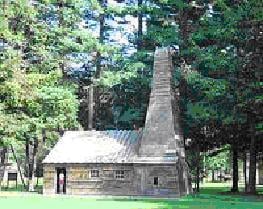*Image Credit: Wikimedia Commons Far in the northwestern corner of Pennsylvania, on a leased stretch of land just outside Titusville – a community of only 250 people – Colonel Edwin L. Drake and William Smith launched the oil industry on August 27, 1859. Using Smith’s skills as a salt well driller, the two managed to tap into a pool of petroleum below the surface and draw oil up in quantities that earned a profit. The world would never look back. For generations, petroleum had been little more than an oddity, seeping up to the surface in small patches where conditions were right, often sandy soil just porous enough for the viscous black liquid to be squeezed from it. Without a means to access the pockets underground, oil found its way into treatment rooms of doctors and veterinarians – it is still used as a remedy for a variety of conditions in some parts of the world, particularly Eastern Europe. Throughout the 18th and early 19th centuries, the extraction process amounted to a long, labor-intensive process of mining and distilling oil-heavy rock. (Hence the name “petr-oleum” from the ancient Greek roots meaning “rock oil.”) When Drake and Smith were sent into the field to attempt drilling around tiny Titusville in the summer of 1859, Russia was the world’s largest producer of petroleum, with approximately 90 percent coming from mines near Baku in modern Azerbaijan. The owners of the Pennsylvania Rock Oil Company sought to change all that. Determined to find a way to make use of the oil spring, Drake and Smith moved out into the woods with a steam engine and drilling equipment to see what could be found. Weeks passed under the hot summer sun before they managed to punch through 69 feet of rock and hit petroleum on August 27, 1859. Much like during the gold rush in California of the late 1840s, Pennsylvania oil towns began popping up immediately. Small villages like Petroleum Centre, Oil City and Pithole founded overnight by wealth-seeking travelers became communities of thousands within months. Though others in places near and far managed to create wells of their own – notably an engine-powered drill in West Virginia that same year and a hand-dug well in Baku more than a decade before – Drake and Smith’s work for Pennsylvania Rock Oil Company (later Seneca Oil Company) garnered the most attention, likely because of the resultant boom that fueled the state’s economy until the 1890s when steel production took off just as oil reserves were beginning to dry up. As northwestern Pennsylvania skyrocketed among the top petroleum producers in the world, the search for new locations became a worldwide mission. Viable commercial wells were soon drilled in Canada, South America, then the East Indies and Middle East. Within just 50 years, the production had gone from about 2,000 barrels annually to well over 126 million per year in the United States alone. Paced at first by the high demand for kerosene, the planet’s appetite for “black gold” has continued to this day, as nine in ten vehicles run on products refined from the same type of petroleum tapped into by Drake and Smith during the summer of 1859.
August 27, 1859 CE – The World’s First Commercially Successful Oil Well is Drilled
*Image Credit: Wikimedia Commons Far in the northwestern corner of Pennsylvania, on a leased stretch of land just outside Titusville – a community of only 250 people – Colonel Edwin…
519
